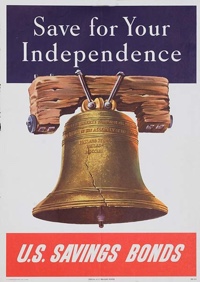 As inflation spiked, so did interest in purchasing inflation-linked Series I Savings bonds. Some folks have been going to extra lengths to increase their ability to purchase them, buying savings bonds for kids, trusts, LLCs, corporations, and so on. One of the more direct ways to increase your annual purchase limits is to use IRS Form 8888 when filing your taxes this year, which allows you to use your tax refund to purchase up to $5,000 in paper Savings Bonds each year. This is on top of the $10,000 annual limit on electronic savings bonds per person at TreasuryDirect.
As inflation spiked, so did interest in purchasing inflation-linked Series I Savings bonds. Some folks have been going to extra lengths to increase their ability to purchase them, buying savings bonds for kids, trusts, LLCs, corporations, and so on. One of the more direct ways to increase your annual purchase limits is to use IRS Form 8888 when filing your taxes this year, which allows you to use your tax refund to purchase up to $5,000 in paper Savings Bonds each year. This is on top of the $10,000 annual limit on electronic savings bonds per person at TreasuryDirect.
Of course, that means you need to have a refund when you file your taxes. You’ll need to estimate your tax liability, and if needed, you can make an overpayment on your federal tax withholding to ensure you have the refund size you want. The deadline for 2022 4th Quarter estimated tax payments is Tuesday, January 17th, 2023.
You can make a direct payment via credit or debit card via various official processors. The processing fee starts at just 1.85%, which means that as long as you have 2% cash back rewards card or better, you can actually come out slightly ahead. Even better, paying $4,000 in taxes would satisfy most of the spending hurdles on big credit card bonuses worth well over $500. Two birds, one stone.
You can also make a direct payment via your bank account at EFTPS.gov or IRS DirectPay.
Right now is the best window, as it minimizes the time between paying the taxes and receiving your paper savings bonds. Filing your taxes earlier will also shorten that window. If you wish, you can later convert those paper savings bonds to electronic form at TreasuryDirect.
 Inflation still 🚀 😬 Savings I Bonds are a unique, low-risk investment backed by the US Treasury that pay out a variable interest rate linked to inflation. With a holding period from 12 months to 30 years, you could own them as an alternative to bank certificates of deposit (they are liquid after 12 months) or bonds in your portfolio.
Inflation still 🚀 😬 Savings I Bonds are a unique, low-risk investment backed by the US Treasury that pay out a variable interest rate linked to inflation. With a holding period from 12 months to 30 years, you could own them as an alternative to bank certificates of deposit (they are liquid after 12 months) or bonds in your portfolio. 
 The Best Credit Card Bonus Offers – 2025
The Best Credit Card Bonus Offers – 2025 Big List of Free Stocks from Brokerage Apps
Big List of Free Stocks from Brokerage Apps Best Interest Rates on Cash - 2025
Best Interest Rates on Cash - 2025 Free Credit Scores x 3 + Free Credit Monitoring
Free Credit Scores x 3 + Free Credit Monitoring Best No Fee 0% APR Balance Transfer Offers
Best No Fee 0% APR Balance Transfer Offers Little-Known Cellular Data Plans That Can Save Big Money
Little-Known Cellular Data Plans That Can Save Big Money How To Haggle Your Cable or Direct TV Bill
How To Haggle Your Cable or Direct TV Bill Big List of Free Consumer Data Reports (Credit, Rent, Work)
Big List of Free Consumer Data Reports (Credit, Rent, Work)